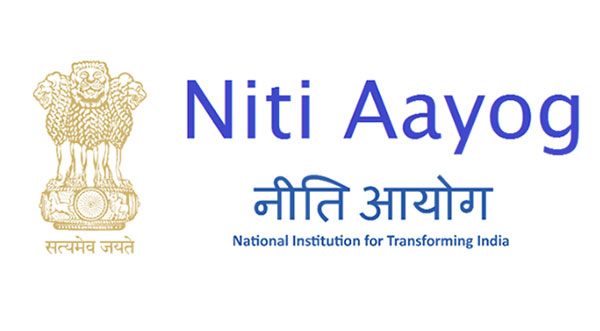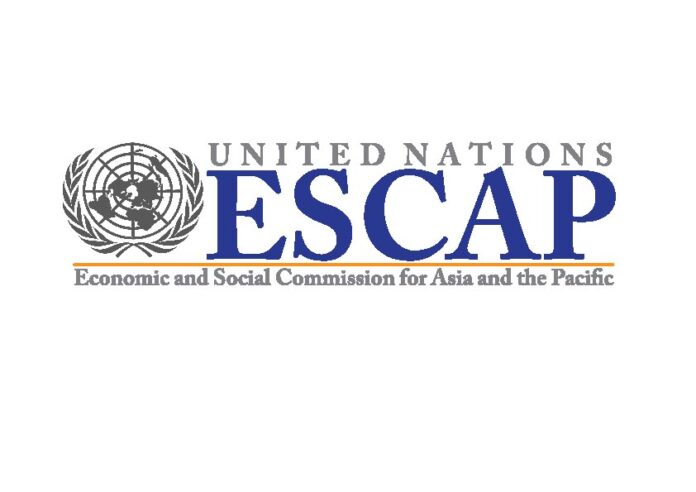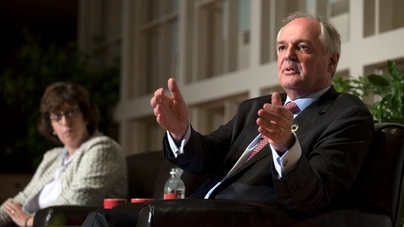HDFC Bank’s HRDP empowers 7 villages in Wardha district
HDFC Bank today announced the completion of its Holistic Rural Development Programme (HRDP) in 7 villages in the Wardha district of Maharashtra. This programme has reached out to 6,000 people living in these villages. HRDP is a flagship CSR initiative of Parivartan, HDFC Bank’s umbrella brand for all its social development programmes.
Five villages are from Arvi Block: Natala, Bothali, Pimpalgaon, Chaka Majara, Amaji Majara and two from Hinganghat Block: Yerangaon, and Satephal.
The initiatives undertaken in these villages are:
- Improved farming demonstrations, water management, digital education
- Clean drinking water and sanitation units
- Construction of 21 check dams, 18 gabion structures
- Soil and water conservation on over 1,000 acres
- Solar fencing on 210 acre, solar street lights
- Income generation activities such as goat rearing, poultry
Amar Kale, Member of Legislative Assembly presided over a ceremony to announce the completion of the projects undertaken in these villages. The Holistic Rural Development Programme seeks to better village life by focussing on improvements in five key areas of:
- Education
- Skills Training and Livelihood Enhancement
- Natural Resources Management
- Water and Sanitation
- Financial Literacy and Inclusion
Under this programme, a thorough assessment of the village is carried out to understand its developmental needs. To address these needs in a sustainable and effective manner, the Bank creates long-term solutions in partnership with an NGO and the local community. The beneficiaries of HRDP include small farmers, youth, landless labourers, children and women.
“Through HRDP we are creating an ecosystem to improve the overall economic and social conditions in rural India. Our NGO partners play an instrumental role in planning and executing projects. We also work closely with local communities, who participate in the projects through ‘Shramdaan’, to make the initiative sustainable,” said Nusrat Pathan, Head – Corporate Social Responsibility, HDFC Bank.
In Wardha, the partner NGO for HRDP is Sanjeevani Institute of Empowerment and Development (SIED).
CSR: 5 Ways To Detect A Fake Job
Job scams were not so common in India before the digital revolution. Job postings used to appear in the newspaper’s classifieds section, which was pricey enough to hold off the scammers. However now, with easy accessibility to the internet, it has become easier for scammers to collect information about unsuspecting individuals and use it to make money.
It is becoming more and more difficult to differentiate a legitimate job from a fake one. However, there are certain patterns in the way the scammers work, which could help to detect if the job is fake and save yourself from fraud.
1. The No Paying rule
Irrespective of how smart the scammers are, their ultimate goal is to get money from the candidate. So, asking for any kind of payment, irrespective of the amount, is a red flag.
2. Research the company
Do thorough research on the company before accepting the offer. The first way to do that is by looking up the company’s website. Confirm the contact and address details and check reviews on public channels.
3. Free v/s Official
A recruiter using free email accounts such as Gmail or Hotmail is a red flag. Genuine professional recruiters will only use their official email addresses to send any offers.
4. Mandatory interview
Any job offered without an interview is most likely fake. No matter how impressive your resume looks, without a proper conversation, confirmation of the job cannot be given.
5. The gory details
If the recruiter is genuine, she will have detailed information about the company hiring, the salary they would be willing to pay for a particular profile and the job description. If a person is unable to answer those questions, it is most certainly a fake job.
Lastly, if there is even a hint of a doubt, it is better to stay away and help the community by reporting the suspicious person to the authorities.
Thank you for reading the story until the very end. We appreciate the time you have given us. In addition, your thoughts and inputs will genuinely make a difference to us. Please do drop in a line and help us do better.
Regards,
The CSR Journal Team
The CSR Journal columnist Dr. Moin Qazi appointed member of NITI Aayog Committee
 Dr Moin Qazi, noted financial academician and our very own columnist at The CSR Journal, has been appointed a new member of National Institution for Transforming India (NITI) Aayog Committee on Financial Inclusion for Women.
Dr Moin Qazi, noted financial academician and our very own columnist at The CSR Journal, has been appointed a new member of National Institution for Transforming India (NITI) Aayog Committee on Financial Inclusion for Women.
NITI Aayog serves as the principal think-tank of Government of India for policy formulation. The NITI Aayog Committee on Financial Inclusion for Women has been mandated with the task of identifying the challenges as well as developing a measurable action plan to provide solutions for financial independence of women entrepreneurs in the country.
Nagpur-based Moin Qazi is the author of the bestselling book, Village Diary of a Heretic Banker. He has worked in the development finance sector for almost four decades. Besides regularly contributing for The CSR Journal website and magazine, he also writes for national and international dailies on various subjects.
Dr Moin Qazi is also a Visiting Faculty on Development Economics at Tata Institute of Social Sciences (TISS). He holds doctorates in Economics and English. He received an Honorary D Litt at the World Congress of Poets at Istanbul in 1991.
Modi government in 2014 replaced the Planning Commission of India with National Institution for Transforming India (NITI) Aayog. It is a policy think tank of the Government of India, established with the aim to achieve Sustainable Development Goals and to enhance cooperative federalism by fostering the involvement of State Governments of India in the economic policy-making process using a bottom-up approach.
The Prime Minister of India is the Ex-officio chairman of NITI Aayog. The permanent members of the NITI Aayog Governing Council are all the state Chief Ministers, along with the Chief Ministers of Delhi and Puducherry, the Lieutenant Governor of Andaman and Nicobar, and a Vice-Chairman nominated by the Prime Minister. In addition, temporary members are selected from leading universities and research institutions. These members include a chief executive officer, four ex-official members and two part-time members.
CSR: Portfolio Approach To Philanthropy
With the goal of instilling clarity and focus in one’s philanthropy, the first step is to conduct a review of the current philanthropic portfolio. For philanthropists who have already been giving and are looking to steer themselves in a more strategic direction, a portfolio review can help them recognise and learn from inefficiencies and successes. Similar to reviews of for-profit investment portfolios, the insights generated from this period of reflection can pave the way for a more catalytic strategy.
Take the case of Donald Lobo. Moving from Mumbai to the US in the early 1990s to pursue a post-graduate degree in computer science, he subsequently joined Yahoo’s founding team as the ‘Technical Yahoo’. As he began to accumulate wealth early in his life, he also began thinking about giving it away. His philanthropic journey started 15 years ago when he founded the Chintu Gudiya Foundation.
Understanding pressing and neglected issues on the ground and taking big bets on organisations with the most effective solutions are integral parts of Donald’s philanthropy. India Philanthropy Report 2018 by Bain & Company states he does this by reading articles in academic journals and newspapers, having in-depth conversations with social entrepreneurs and speaking with beneficiaries during three weeks of volunteering every summer with his wife and children.
The exposure and exploration helped him test, learn and improve his approach to philanthropy. Today, besides contributing funds, Donald uses his skills and helps organisations strengthen their programmes by using low-cost, open source technology solutions to collect and analyse data.
In addition to hands-on engagement with philanthropy, a review of his portfolio helped Donald refine his philanthropic strategy. Specifically, it helped him recognise trends and insights into the performance of his grantee organisations, the sector-wide mix of his portfolio, the number of beneficiaries reached and how his support has helped build the capacity of these organisations. Engaging a philanthropy adviser to conduct this portfolio review enhanced its rigour, professionalism and objectivity.
The writings of leaders such as Suparna Gupta of Aangan Trust and numerous conversations with Pratima Joshi of Shelter Associates opened a window into the complex reality of implementing development programmes and the innovative, sometimes frugal ways they overcome grassroots challenges.
Ultimately, the combination of a portfolio review and on-the-ground insights has been a positive reinforcement for Donald, allowing him to assess his years of philanthropy, understand the impact of his giving, expand his sectors of interest, evaluate the right balance between the heart and the mind and eventually pave the path for future giving.
My Journey To Uttar Pradesh
In his previous column, Dr Anantpal Singh talked about his experiences as a healthcare innovator in Bihar. This piece in the series explores Uttar Pradesh.
The importance of this State zooms across time and civilizations. The great Indus Valley civilization and Harappan civilization are historic.
Novelist Ruskin Bond once said: “I had been to other countries – in Europe,Asia and the Middle East – but none of them had provided even half as much variety, or so much to see and experience and remember, as this one State in northern India. You can travel from one end of Australia to the other, but everywhere on that vast continent you will find that people dress in the same way, eat the same kind of food, listen to the same music. This colourless uniformity is apparent in many other countries of the world, both East and West. But Uttar Pradesh is a world in itself.”
Indian culture has blossomed since time immemorial here. Uttar Pradesh is the land of the great rivers Ganga and Yamuna. The sacred soil of UP has seen heroes like Lord Rama who reigned over Ayodhya, Lord Krishna the eighth incarnation of Lord Vishnu who was born in Mathura, Lord Mahavira, Lord Buddha and the famous demon king, Ravana. In the 16th century, King Babbar, one of the descendants of Timmur and Genghis Khan, invaded India and brought the Mughals, who ruled from Agra.
Present day Uttar Pradesh is a famous tourist destination because of the Taj Mahal built in the 17th century by King Shah Jahan. Other famous sites are Bada Imambara and Chota Imambara, and Ramabhar Stupa, a magnificent 50-foot structure build over a portion of Lord Buddha’s ashes.
For us at Spectrum Health Solutions, Bihar inspired us to move our healthcare initiatives further up in India. We planned a trip to the State has given India 14 prime ministers. We surveyed Kanhauli, Bhogipati, Kundi, Nishan, Mahimapur, Gaddipur, Dewalkarpur and Jaunpur and talked to the villagers, and tried to understand their condition, which were incidentally identical to Bihar.
There were multiple ‘jhola chaap’ doctors and no medical pharmacies. People travel to Muftiganj to procure medicines. Since there are no qualified M.B.B.S doctors, the villagers are compelled to travel for treatment to Jaunpur city, which is another 22 km from Muftiganj. There is a government hospital 3 km from Gaddipur but it is lacking in facilities and availability of medicines. We zeroed in on Muftiganj to set up our clinic. There are eight villages within a radius of 8 km, covering approximately 15,000 to 18,000 people.
The local population depends on farming for their livelihood. In this neighbourhood, we discovered that there is perpetually one member in each family in need of serious medical help on account of some physical, pathological, infectious, addiction-related or hygiene-related health issue. This estimate is over and above deficiencies and malnutrition. Add to that skin ailments, joint and bone disorders, lung disorders, diabetes and hypertension. The rainy season is dreaded since there are frequent outbreaks of infectious diseases including gastroenteritis, typhoid and jaundice.
People spend 40% to 50% of their life’s savings on medical assistance. Since they have to travel long distances to get satisfactory medical help, the villagers have no choice but to turn to jhola chaap doctors.
Now, thanks to the Swachh Bharat Abhiyaan, the living conditions seem to be improving. People have started building toilets within their homes. Witnessing the poverty, high incidence of malnutrition in children and acute shortage of doctors, we plan to open five clinics providing free medical support to all. One is already operational.
I am pleased to be a part of the health revolution. My team We at Spectrum Health Solutions solemnly pledge all our support for the Beti Bachao movement by the government of the day. We would like to invite all like-minded companies to join us on this platform with constructive and decisive CSR support, and help in the formation of ‘a healthy India’.
 Dr Anantpal Singh is a leading physician, entrepreneur and health researcher from Spectrum Health Solutions Pvt. Ltd. Dr Singh envisions a global community with healthcare solutions which are simple to use and deliver better results than conventional methods.
Dr Anantpal Singh is a leading physician, entrepreneur and health researcher from Spectrum Health Solutions Pvt. Ltd. Dr Singh envisions a global community with healthcare solutions which are simple to use and deliver better results than conventional methods.
Views of the author are personal and do not necessarily represent the website’s views.
Thank you for reading the column until the very end. We appreciate the time you have given us. In addition, your thoughts and inputs will genuinely make a difference to us. Please do drop in a line and help us do better.
Regards,
The CSR Journal Team


















